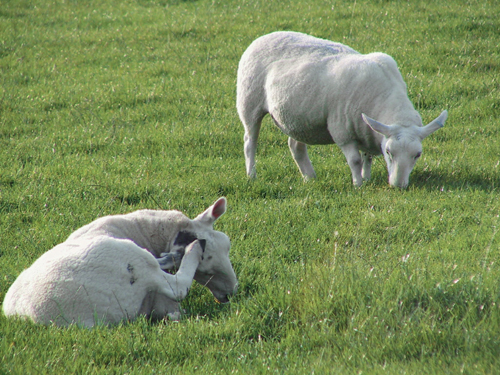Difference between revisions of "Sheep Medicine Q&A 08"
| Line 21: | Line 21: | ||
*Topical emollients and antibiotic preparations are not usually necessary and skin wounds heal well provided flies are denied access to these areas. | *Topical emollients and antibiotic preparations are not usually necessary and skin wounds heal well provided flies are denied access to these areas. | ||
*Pour-on fly control preparations, such as high cis cypermethrin or deltamethrin, must be applied before the anticipated headfly season and especially to horned sheep. Such treatments should be repeated every 3–4 weeks during the fly season or as directed by the data sheet instructions. | *Pour-on fly control preparations, such as high cis cypermethrin or deltamethrin, must be applied before the anticipated headfly season and especially to horned sheep. Such treatments should be repeated every 3–4 weeks during the fly season or as directed by the data sheet instructions. | ||
| − | |l2= Fly Worry | + | |l2= Fly Worry#Treatment and Control |
</FlashCard> | </FlashCard> | ||
Latest revision as of 23:52, 5 August 2011
| This question was provided by Manson Publishing as part of the OVAL Project. See more Sheep questions |
In late summer a farmer complains that some ewes have lost considerable condition as a consequence of not grazing and are observed frequently kicking at their heads with their hindfeet, causing serious damage to the poll and ears. The affected ewes seem distressed, frequently running 10–15 m then stopping, only to start running away again.
| Question | Answer | Article | |
| What are possible causes of this problem? (Most likely cause first.) | Feeding around head wounds and ear tag injuries (and horn base) by the muscid fly Hydrotea irritans causes considerable irritation that frequently results in self-trauma. Grazing patterns are disturbed and affected sheep often isolate themselves and remain in shade where available. |
Link to Article | |
| How can this problem be controlled? |
|
Link to Article | |
